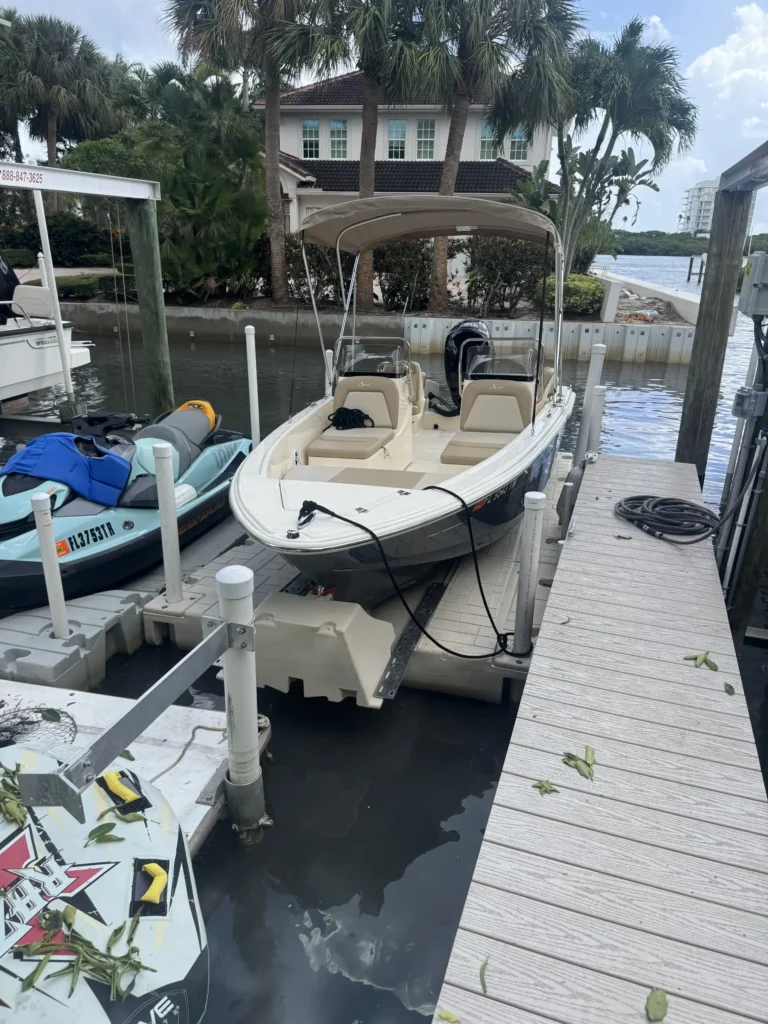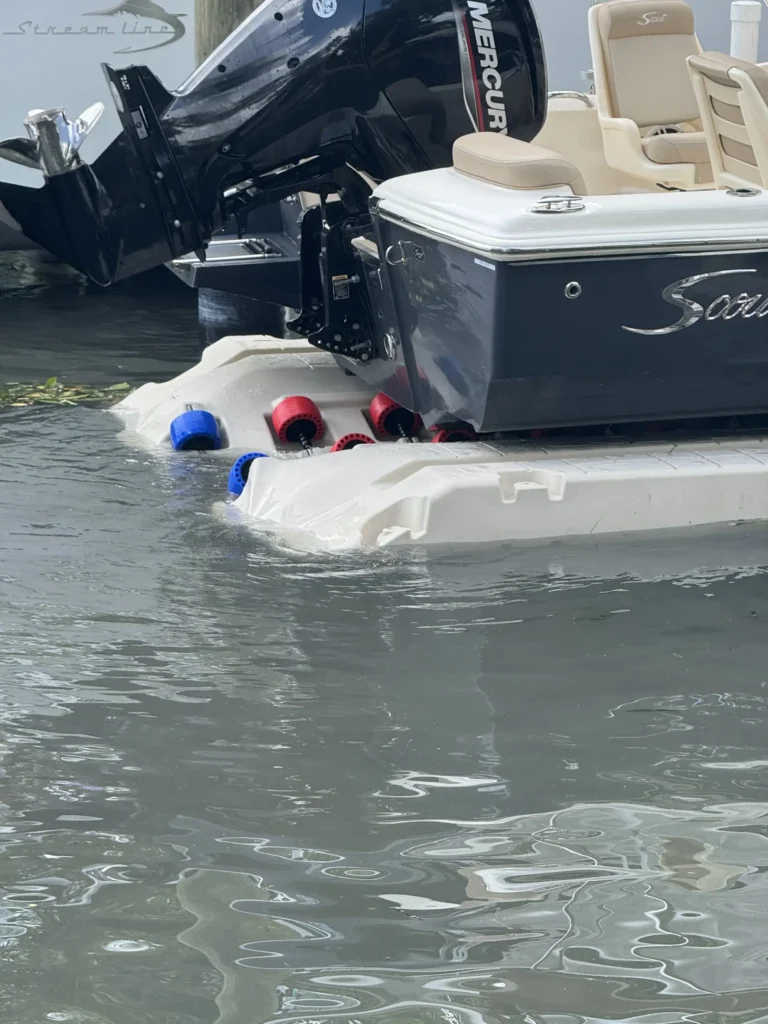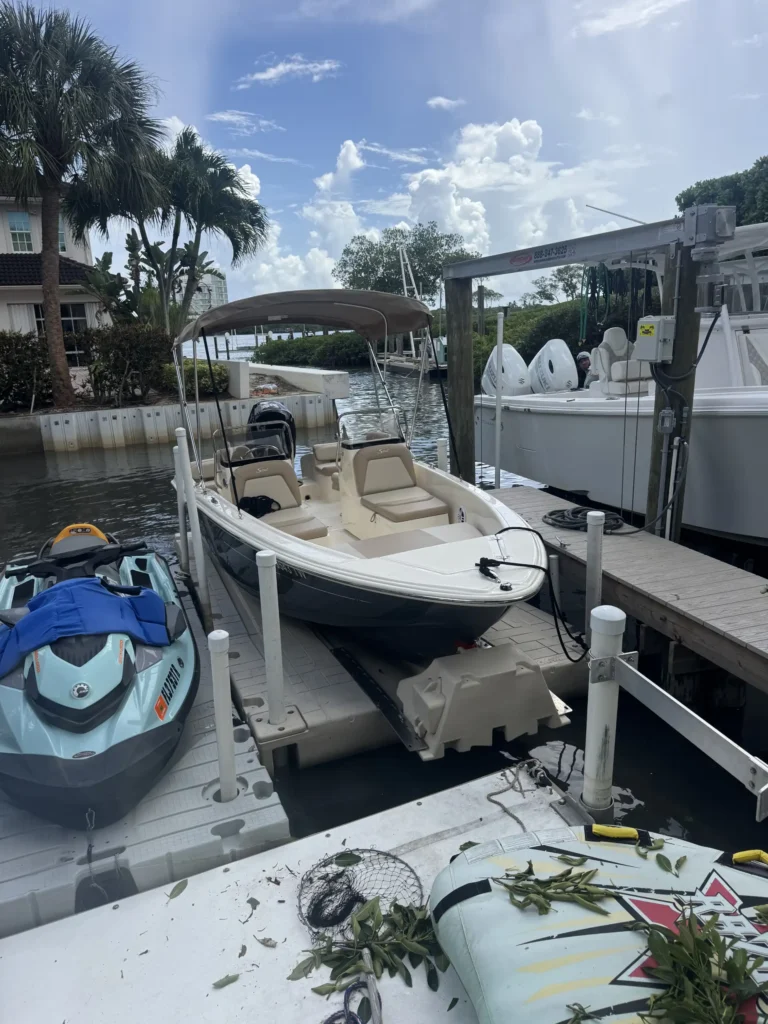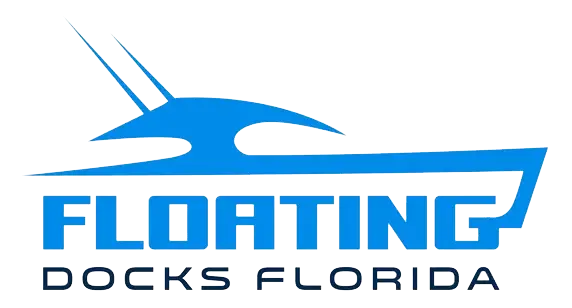For many boat owners, enjoying a day on the water is often overshadowed by the hassle of boat storage. Do you go with a traditional boat lift, or are the newer drive-on floating ports the better choice?
While traditional boat lifts certainly get your vessel out of the water, they can be slow, complicated, and often require significant space and installation. Enter the floating boat port: an in-water, drive-on dry-dock solution that offers unmatched convenience and can solve some of the trickiest docking challenges—like finding a home for a boat in a narrow canal.
Here’s why floating boat ports are changing the game, illustrated by a perfect real-life example from one of our recent customers.
Floating Port vs. Traditional Lift: The Key Differences
| Feature | Floating Boat Port (Pro 170) | Traditional Boat Lift (Mechanical) |
|---|---|---|
| Operation | Drive on, power off. Launch in seconds. | Use a motor/crank to raise or lower the boat with lines/cables. |
| Convenience | Highly convenient, minimal effort. Eliminates lines and fenders. | More time-consuming, requires careful alignment and operation. |
| Installation | Easier, modular, and works with fixed or floating docks. | More complex, often requires pilings and professional installation. |
| Water Levels | Floats with changing water levels (great for tidal areas). | Designed to handle some fluctuation, but deep changes can limit use. |
| Space | Low-profile design can fit into very tight spaces. | Often requires more space to accommodate the mechanical structure. |
The Ultimate Challenge: Docking a Boat in a Narrow Canal
A common problem for waterfront homeowners is owning a boat but having limited space, especially in narrow canals common in areas like South Florida. You want your boat ready to go, but a traditional lift simply won’t fit, and who wants to trailer their boat every single weekend?
This was the exact challenge for our customer, Clinton B. in Jupiter, FL.
The Client: Clinton owned a great 16′ Scout Center Console—the perfect boat for zipping around.
The Problem: His dock space was incredibly tight, measuring only 7’10” wide. This narrow channel made a bulky traditional lift impossible and forced him to keep his boat in the driveway, requiring him to spend precious weekend time hauling it to and from the ramp.
The Solution: We proposed the Pro 170 Boat Port (which measures 7.5′ wide), knowing its compact, low-profile design and easy drive-on function were a perfect fit.
The result was a total game-changer. The Pro 170 tucked perfectly into the narrow slip, transforming Clinton’s waterfront experience.
“His Scout now sits clean and protected on the water, launch-ready in seconds. No more trailering and no wasted weekends hauling back and forth.” – Lou (Floating Port Specialist)



This successful installation is a powerful example of how the design of a floating port provides solutions that mechanical lifts simply can’t:
- Maximum Space Savings: With a width of just 7.5 feet, the Pro 170 uses minimal dock space, leaving room for a very narrow boat in a 7’10” wide channel.
- Instant Access: The drive-on, launch-ready design eliminates the time-consuming process of cranking a lift up or down. Your weekend starts the second you step on the boat.
- Optimal Protection: Like a lift, the port keeps the hull of your boat completely dry, protecting it from corrosion, algae, and marine growth.
The Takeaway
If you’re dealing with a challenging dock location—be it a narrow canal, fluctuating water levels, or just a desire for ultimate convenience—the floating boat port is the modern solution. Stop wasting time with complicated lifts or the weekend chore of trailering. Get your boat off the trailer and onto the water, ready to launch in seconds.
Ready to find the perfect port for your boat? Contact our team today for a free consultation!
